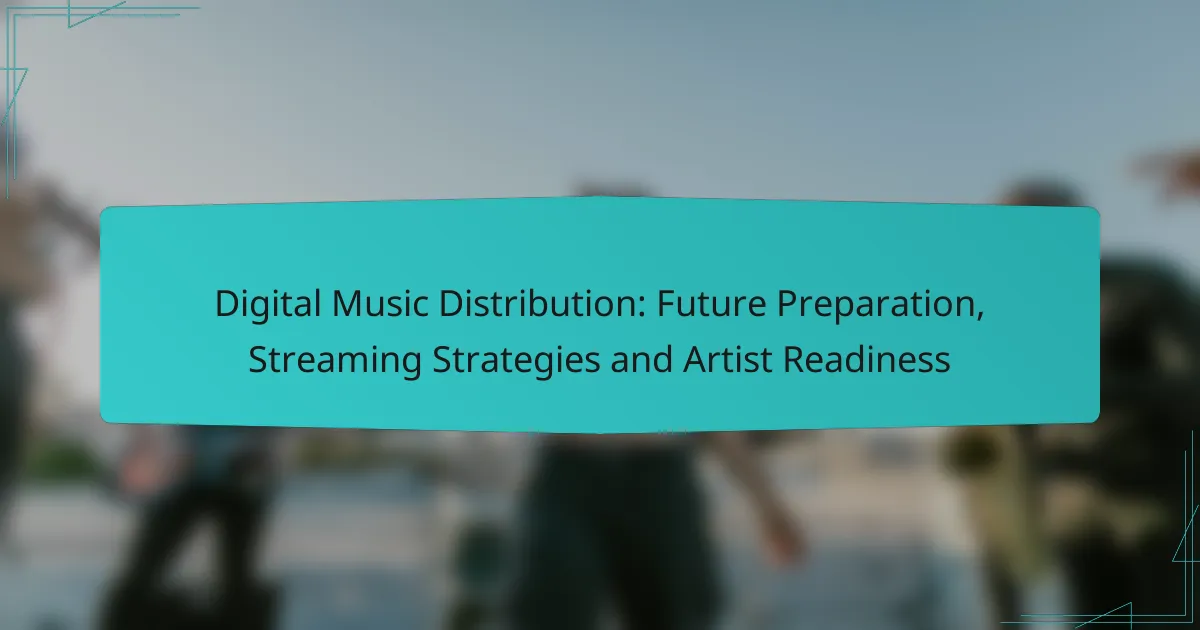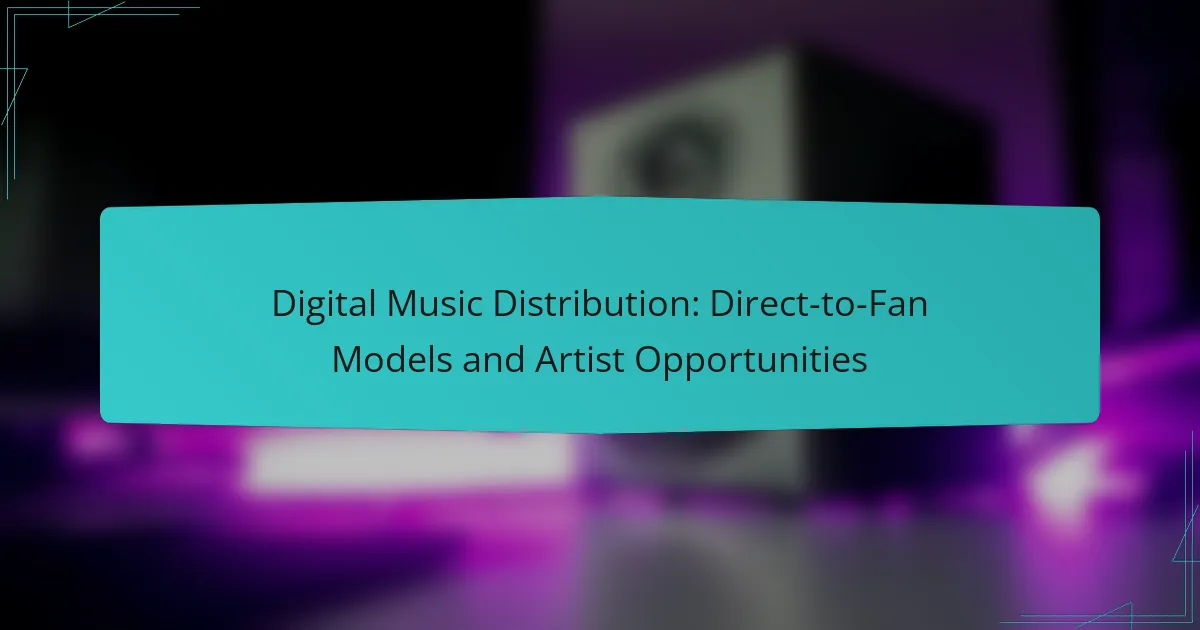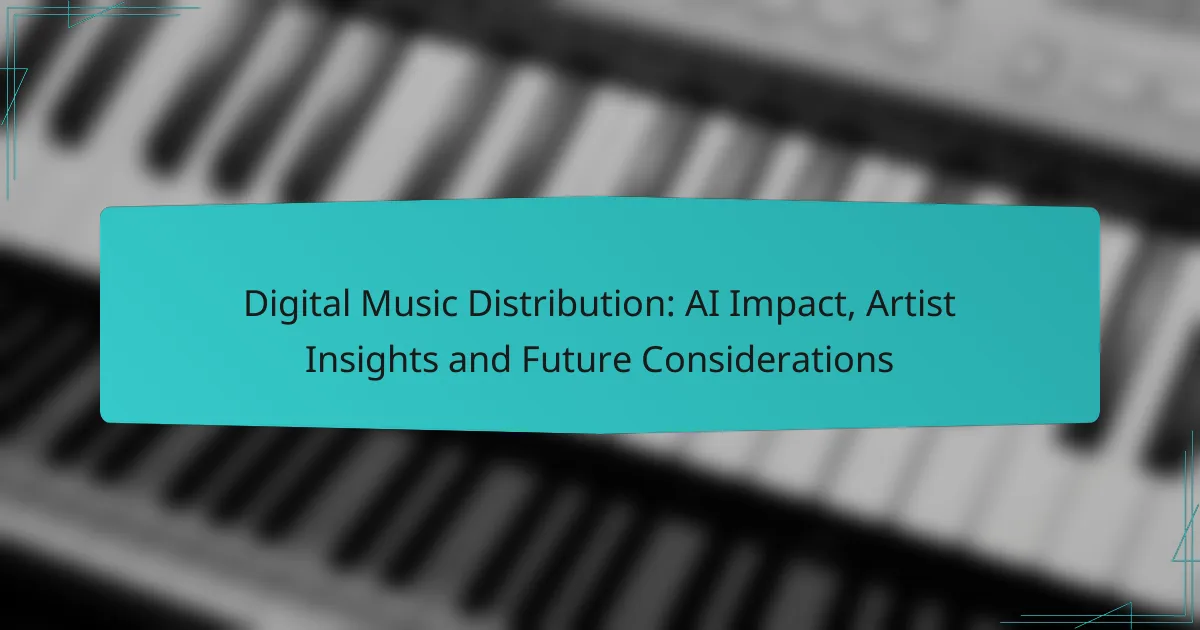As the digital music landscape continues to evolve, artists must prepare for effective distribution by understanding various platforms and enhancing their online presence. By implementing strategic streaming practices and selecting the right distribution services, musicians can optimize their visibility and revenue potential. Engaging with audiences and creating exclusive content are essential steps in navigating this competitive environment.
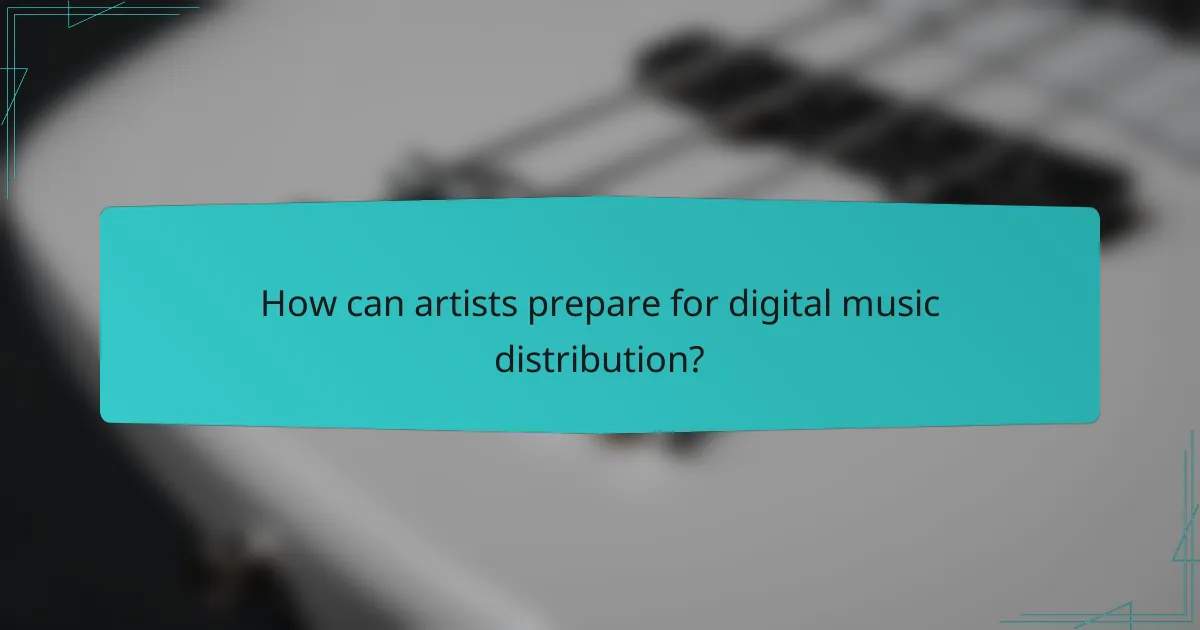
How can artists prepare for digital music distribution?
Artists can prepare for digital music distribution by understanding the platforms available, building a strong online presence, and engaging with their audience effectively. These steps will enhance their visibility and readiness in a competitive digital landscape.
Understanding digital platforms
Familiarizing oneself with various digital music platforms is crucial for artists. Popular services like Spotify, Apple Music, and Bandcamp each have unique features and audience demographics. Artists should research which platforms align best with their music style and target audience.
Additionally, understanding the distribution process, including how royalties are calculated and paid out, helps artists make informed decisions. Many platforms offer different monetization options, so evaluating these can maximize earnings.
Building a strong online presence
A strong online presence is essential for artists looking to thrive in digital music distribution. This includes having a professional website, active social media profiles, and engaging content that reflects their brand. Consistency in branding across all platforms helps build recognition.
Artists should regularly update their online profiles with new music, videos, and behind-the-scenes content. This not only keeps fans engaged but also attracts new listeners who discover the artist through various channels.
Engaging with fans on social media
Engaging with fans on social media is vital for building a loyal fanbase. Artists should interact with their audience through posts, comments, and live sessions, creating a sense of community. Regular updates about music releases, tours, and personal insights can foster deeper connections.
Utilizing features like polls, Q&A sessions, and giveaways can also enhance engagement. Artists should be authentic and responsive, as this encourages fans to share their music and expand their reach organically.
Utilizing analytics tools
Analytics tools provide valuable insights into audience behavior and preferences. Platforms like Spotify for Artists and YouTube Analytics help artists track listener demographics, engagement rates, and geographic locations. This data can inform marketing strategies and content creation.
By analyzing trends and performance, artists can adjust their promotional efforts to focus on the most effective channels and content types. Regularly reviewing analytics ensures that artists stay aligned with their audience’s interests.
Collaborating with other artists
Collaborating with other artists can significantly enhance exposure and reach. Joint projects or features allow artists to tap into each other’s fanbases, introducing their music to new listeners. Choosing collaborators with complementary styles or similar audiences can amplify this effect.
Additionally, collaborations can lead to creative growth and innovation, as artists share ideas and techniques. Networking within the music community can open doors to opportunities that might not be available individually.

What streaming strategies maximize revenue?
To maximize revenue from streaming, artists should focus on selecting the right platforms, implementing effective pricing models, leveraging playlist placements, and creating exclusive content. Each of these strategies plays a critical role in enhancing visibility and profitability in the competitive digital music landscape.
Choosing the right streaming services
Selecting the appropriate streaming services is crucial for maximizing revenue. Popular platforms like Spotify, Apple Music, and Amazon Music each have different user bases and payout structures, so understanding these can help artists target their audience effectively.
Consider the demographics of each service. For instance, Spotify tends to attract younger listeners, while Apple Music may appeal more to an older demographic. Aligning your music style and marketing efforts with the right platform can significantly boost engagement and earnings.
Implementing effective pricing models
Effective pricing models can enhance revenue generation from streaming. Many platforms offer subscription-based models, but artists can also explore tiered pricing for exclusive content or merchandise bundles. This approach allows fans to choose how much they want to invest in their favorite artists.
Additionally, consider offering limited-time promotions or discounts to encourage new subscriptions. Regularly reviewing and adjusting pricing strategies based on market trends can help maintain competitiveness and maximize income.
Leveraging playlist placements
Getting featured on popular playlists can significantly increase an artist’s streams and revenue. Curated playlists on platforms like Spotify can drive substantial traffic to an artist’s music, so targeting playlist curators is essential.
Artists should actively promote their music to playlist curators and engage with their audience on social media to increase their chances of being included. Building relationships with influencers and other artists can also lead to collaborative opportunities that enhance visibility.
Creating exclusive content
Exclusive content can attract more listeners and increase revenue streams. This could include special tracks, behind-the-scenes videos, or live performance recordings that are only available on specific platforms or for a limited time.
Offering exclusive content not only incentivizes fans to subscribe to a service but also creates a sense of urgency. Consider using platforms like Patreon or Bandcamp for direct fan support, allowing artists to monetize their exclusive offerings effectively.
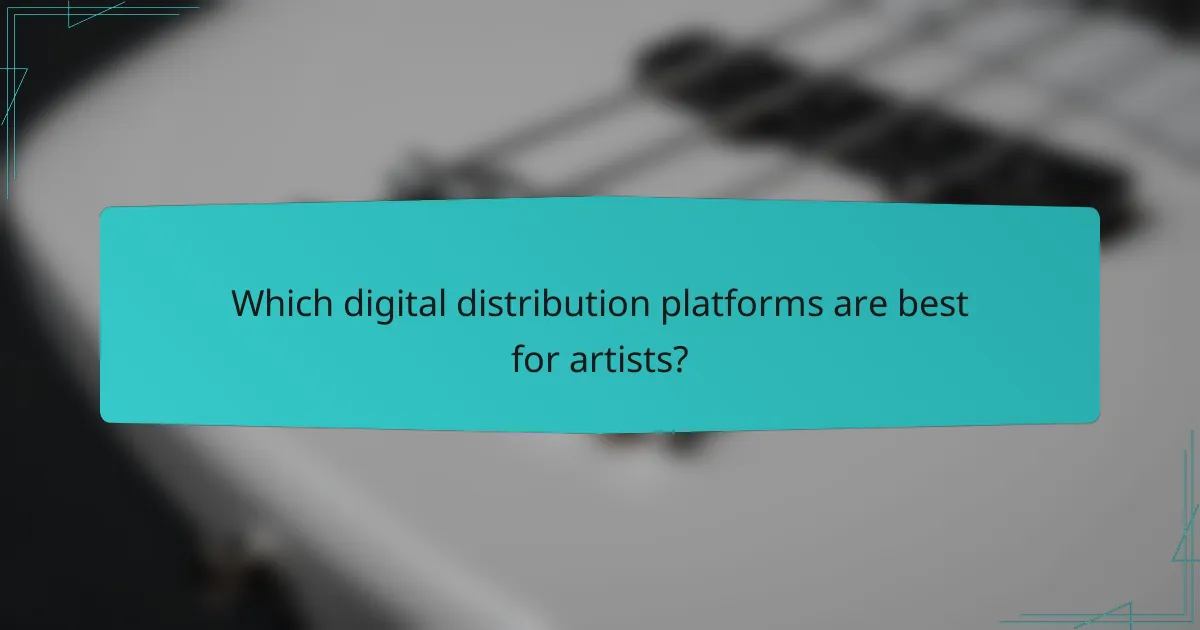
Which digital distribution platforms are best for artists?
The best digital distribution platforms for artists include CD Baby, TuneCore, and DistroKid, each offering unique features and pricing structures. Artists should consider their specific needs, such as budget, speed of release, and additional services when choosing a platform.
CD Baby features and benefits
CD Baby is known for its user-friendly interface and comprehensive services, making it a popular choice among independent musicians. It offers distribution to major streaming platforms, physical CD sales, and sync licensing opportunities.
One of the key benefits of CD Baby is its one-time fee structure, which allows artists to keep 100% of their royalties. Additionally, they provide tools for marketing and promotion, helping artists reach a wider audience.
TuneCore pricing and services
TuneCore operates on an annual subscription model, charging artists for each release. This platform provides extensive distribution options, including access to over 150 digital stores worldwide, which is ideal for artists looking to maximize their reach.
While TuneCore allows artists to retain 100% of their earnings, the annual fees can add up, especially for those releasing multiple singles or albums each year. Artists should weigh the costs against their expected revenue to determine if TuneCore is the right fit.
DistroKid speed and efficiency
DistroKid is renowned for its rapid distribution, often delivering music to streaming services within a few hours. This speed is particularly advantageous for artists looking to release music quickly and capitalize on trends.
With a flat annual fee, DistroKid allows artists to upload unlimited songs and albums, making it a cost-effective option for prolific musicians. However, artists should be mindful of the lack of physical distribution options compared to other platforms.
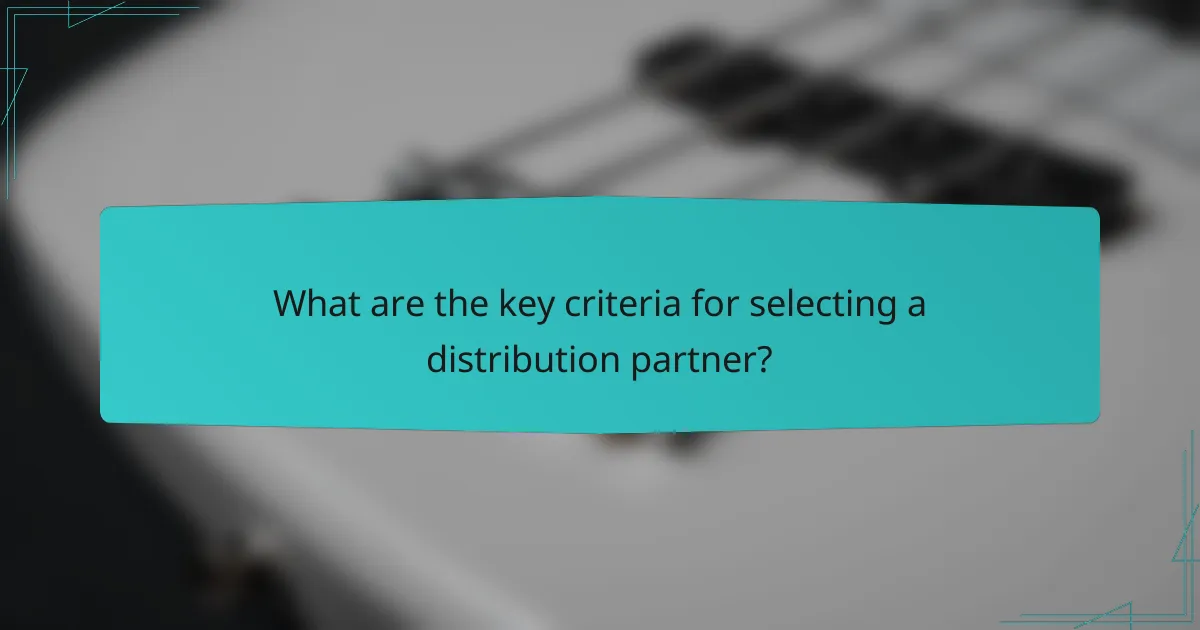
What are the key criteria for selecting a distribution partner?
When selecting a distribution partner, consider factors such as revenue share models, global reach, and customer support. These criteria can significantly impact your music’s success and your overall earnings.
Revenue share models
Revenue share models dictate how earnings from streaming and sales are divided between the artist and the distributor. Common models include a 70/30 split, where the artist retains 70% of the revenue, and a 50/50 split, which is less favorable for artists. Understanding these models helps you choose a partner that aligns with your financial goals.
Evaluate whether the distributor charges upfront fees or takes a percentage of your earnings. Some platforms may offer a flat fee for distribution, which can be beneficial if you expect high sales volumes.
Global reach and availability
A distribution partner’s global reach is crucial for maximizing your music’s exposure. Look for partners that distribute to major streaming platforms like Spotify, Apple Music, and regional services that cater to specific markets. This ensures your music is accessible to a wider audience.
Consider the availability of your music in different countries and regions. Some distributors may have stronger connections in certain areas, which can enhance your visibility and sales potential in those markets.
Customer support and resources
Effective customer support is essential when navigating the complexities of digital music distribution. Choose a partner that offers responsive support channels, such as live chat or dedicated account managers, to assist you with any issues that may arise.
Additionally, look for resources like educational materials, marketing tools, and analytics dashboards. These resources can help you promote your music effectively and track its performance across various platforms, ultimately leading to better decision-making and growth opportunities.
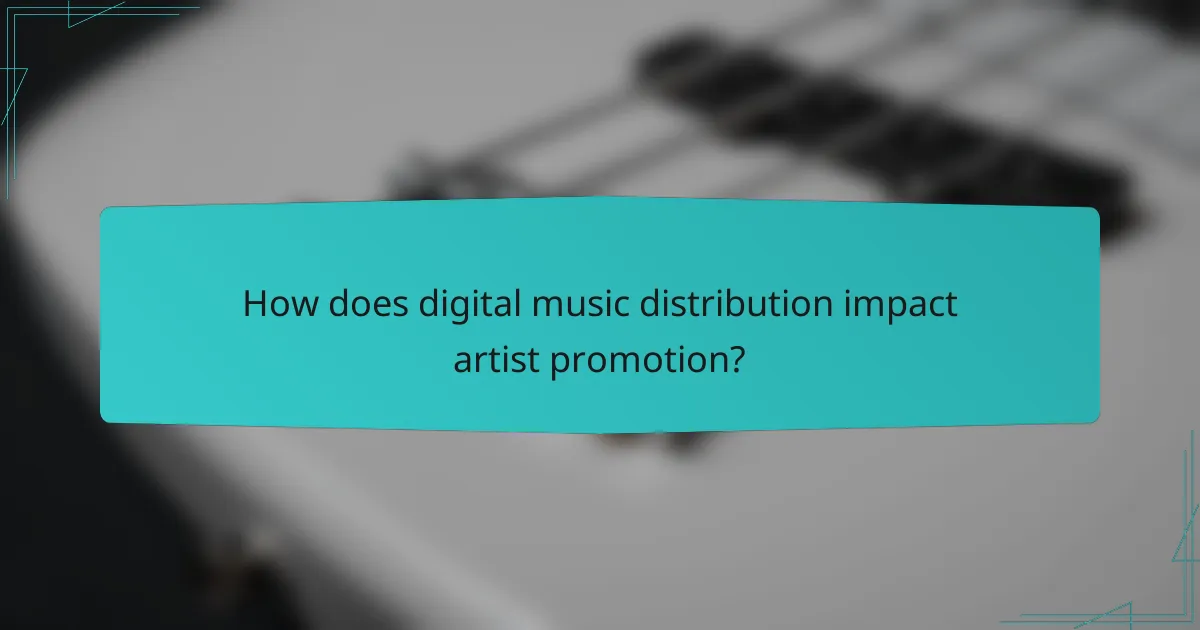
How does digital music distribution impact artist promotion?
Digital music distribution significantly enhances artist promotion by providing broader access to audiences and facilitating targeted marketing efforts. With platforms like Spotify and Apple Music, artists can reach listeners globally, while data analytics allow for tailored promotional strategies.
Integration with marketing strategies
Integrating digital music distribution with marketing strategies is essential for maximizing an artist’s reach and engagement. By aligning music releases with promotional campaigns on social media, email newsletters, and other channels, artists can create a cohesive brand presence that resonates with fans.
For example, an artist might release a new single alongside a social media challenge, encouraging fans to share their own videos using the track. This not only boosts visibility but also fosters community engagement. Consider using platforms like Instagram and TikTok, where visual content can amplify music promotion.
When planning marketing strategies, focus on key metrics such as streaming numbers, social media interactions, and fan demographics. Regularly analyze these metrics to adjust campaigns for better performance, ensuring that promotional efforts are both effective and efficient.
